| (An offer to form an Irish
Corps in Queensland was rejected in 1862).
After a meeting held in Christchurch on
29th April 1885, 95 members of the Irish community applied to form an Irish volunteer corps. This was accepted on 30th April 1885 as the Canterbury Irish
R.V.
On 1st June 1892 they were amalgamated with the Sydenham
R.V. to form the Christchurch City R.V. gazetted 22nd July 1892. The Dunedin Irish R.V. were formed 7th May 1885.
- Nine days before an announcement had appeared in the
Otago Daily Times,
- "A meeting of Irishmen desirous of forming a corps to take part in the defence of the colony, to be
held in Odd-fellows Hall, Nattray Street Wed. at 8pm."
189 men offered their services. The Dunedin Irish
R.V. became part of the 1st Bn Otago R.V. on 25th January 1886 and were disbanded on 13th September 1893.
One other Irish Corps was to be formed in the South Island of New Zealand - the Southland Irish
R.V. were formed at Invercargill and accepted 10th June 1885 as an Honorary
Corps. They applied to be formed into a Garrison Corps 7th August 1885 and were disbanded on 9th July 1886. |
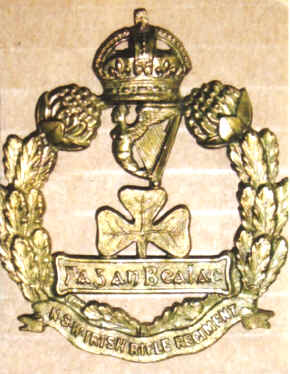
|
Another Irish corps was proposed during a war scare in 1885: the Temuka Irish Rifles on 13th June 1885, but the proposal was abandoned when the government deemed it improbable that hostilities would ensue. An Irish corps was proposed on 3rd April 1887 and accepted 24th June as the Auckland Royal Irish R. V.
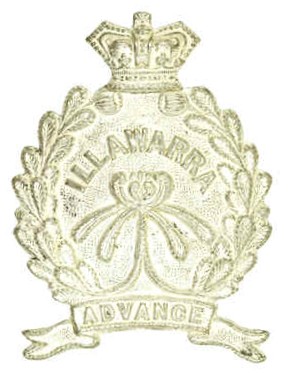 |
They were posted to the 3rd Bn Auckland
R.V. 13th August 1887. When inspected on 6th October 1889 they had a total strength of 93 officers and men. They were disbanded 5th March 1892.
The last Irish Corps to be formed in New Zealand was the Irish RX (Wanganui) accepted 22nd October 1901.
They were attached to the 2nd Bn Wellington (West Coast) R. V. and 'J' Company
16th April 1902, becoming 'I' Company on 1st November 1904.
The Defence Act of 1911 saw an
end to the volunteer system, the Wanganui Irish (by now 'H' Company) were absorbed into the
new territorial system when the 2nd Bn Wellington (West Coast) R.V. were re-designated, 7th Regiment (Wellington West Coast Rifles) on
17th March 1911.
|
Eighteen years after the formation of the first Irish Corps in New Zealand, the Queensland Irish Volunteer Corps were proposed on
18th February 1887 and gazetted 24th February 1887 as 'A: Company Queensland Irish Rifle Corps.
| Established at Peel Street, South Brisbane with three officers and 100 other ranks, 'B' and 'C' companies quickly followed, formed on
11th March 1887 at Valley, North Brisbane and 22nd March 1887 at Petrie Terrace, West Brisbane.
'D' Company was formed at Gympie on
14th November 1888 with an establishment of three officers and 90 other ranks. The application to form this was submitted 27th May 1887. The application to form a company at Ipswich was submitted 26th August 1889. They were gazetted 4th September 1889 as 'E' Company and had a strength of three officers and 90 other ranks. |
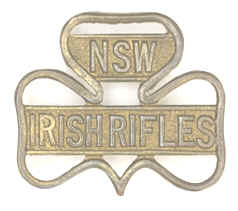 |
Gazetted the same day were 'F' Company established at Woollongabba, East Brisbane with three officers and 90 other ranks. The final
company raised was 'G' at Maryborough again with three officers and 90 other ranks on December 4th 1889.
An application in March 1887 signed by over 100 men willing to form an Irish
Corps at Rockhampton came to nothing. 'G' Maryborough company was the first to disband on 6th August 1891 followed by 'D' Gympie company on 7th November 1894.
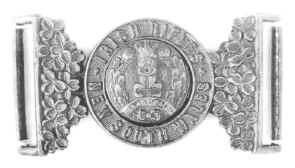 |
In a reorganisation in 1896 the Queensland Irish Volunteer Corps were designated 3rd (Queensland Irish) Bn., Regiment of Queensland Rifles and
'A', 'B', 'C', 'E' and 'F' companies became 'I' ,'J', 'K', 'M' and 'N' companies. On 30th July 1897
'I', 'K' and 'M' companies were disbanded, 'L' and 'N' companies were disbanded
by August the following year and this brought to an end the
Volunteer Corps in Queensland. |
In November 1895 a meeting was held in Sydney Town Hall when it was decided to form an Irish
Rifle Corps. These companies were established and gazetted 5th March 1896, as the New South Wales Irish Rifles. They were grouped together with St George Rifles and the Scottish Rifles to form an administrative regiment, designated the 5th (Union Volunteer) New South
Wales Infantry Regiment on 20th June 1896. Another Irish Company was
formed in Sydney in 1998.
| These national companies split to form their own distinct regiments and the Irish were re-designated as the 8th Union Volunteer Infantry Regiment (Irish Rifles) on 1st July 1899.
For administrative purposes two non Irish companies from the
Illawarra district (one at Kogarah and one at Bulli) were attached. A further Irish
Company was formed at Newcastle, the men being sworn in, in June 1900. Twenty three men of the 8th fought in the Boer War.
The 8th Union Volunteers Infantry Regiment (Irish Rifles) was re-designated NSW Irish Rifle Regiment (Volunteers) in 1903 and 1st Bn NSW Irish
Rifle Regiment in 1908.
A major reorganisation in 1912 saw the name change to 33rd
Infantry Regiment, and in yet another reorganisation in 1918, change to 55th Bn.
In 1927 the old NSW Irish Rifles title was revived. The Irish connection finally came to an end in
1930 when the regiment was re-designated NSW Rifle Regiment.
|
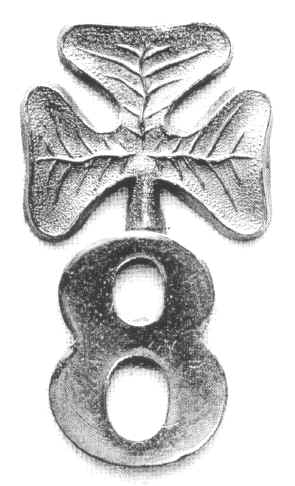 |
The South Australian Register, dated 13th February 1900, carried the following public notice: 'A meeting of all interested in the formation of an Irish Rifle Corps will be held on Tuesday February 20th at 8pm in the town hall."
Afterwards 157 names of volunteers were taken, and after selection, were to become 'F' (Irish) Company, 1st Bn Adelaide Rifles. With the formation of the Australian Commonwealth military forces in 1903, the Adelaide Rifles became part of the newly formed 10th Australian Infantry Regiment and the
Irish company, as such, ceased to exist. This had been the last Irish unit to be formed in Australia. |